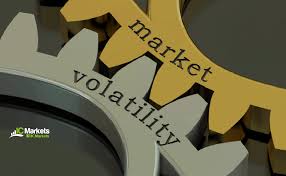Discover how you can trade the VIX – including examples of volatility trading and how to short the VIX. Today, we have enabled a CFD contract on the Volatility Index Futures that trade on the Chicago Board Options Exchange. The volatility index, or VIX, is one of the most usual barometers of market sentiment. For traders, the VIX not only represents a useful tool for assessing risk, but also the opportunity to capitalise on volatility itself. The VIX calculation involves exceptionally complex mathematics, VIX and calculated and published by the CBOE. However, the basic theory of the analysis is that by combining the weighted prices of multiple S&P 500 put and call options over a wide range of strike prices, we can gain insight into what prices traders are willing to buy and sell the S&P 500 at. These final values will estimate the future volatility of the S&P 500. The options that qualify for inclusion will be at the money to show the general market perception of which strike prices will be hit before expiry. This then indicates the more comprehensive market sentiment surrounding the direction of the market price.
Going long on the VIX.
The position you choose to take will depend on your expectation of volatility levels. Traders who go long on the VIX expect that volatility is going to increase and so the VIX will rise. For example, if you thought that the S&P 500 would experience a significant and sharp decline following a political indiction, you might take a long prospect of volatility. Going long on the VIX is a favoured position in times of financial instability when there is a lot of stress and insecurity in the market. You could do this by opening a position to buy the VIX. If there were volatility, your prediction would have been correct, and you could take advantage. However, if you had taken a long position, and there was no volatility on the market, your position would have to bear a loss.
The VIX really acts as if it is negatively correlated to the broad market, so it generally goes up when the market is falling, and falls when the market is increasing. According to the CBOE, this correlation is about 99% true.
This will enable traders to know whether investors anticipate equity markets to remain calm in the next 30 days, or if any known or unknown event is likely to trigger a sell-off or rally.
In addition to trading futures and options on the VIX, you can now trade (CFD) on the value of the VIX, and this expresses the best way for many traders who want to take a direct conjecture on the direction that it will move. Some people even suggest that this can be used as a hedge for another existing position.
Like price and volume, volatility has been known to move the markets tremendously and, accordingly, has a significant impact on investor portfolios. Whether volatility is high or low, the VXX offers investors a singular opportunity to mitigate risk over time.

